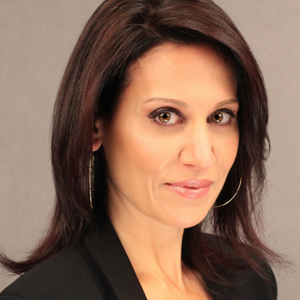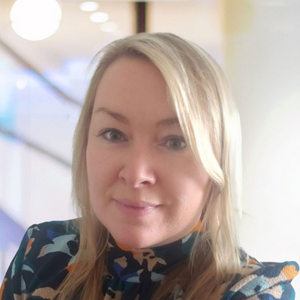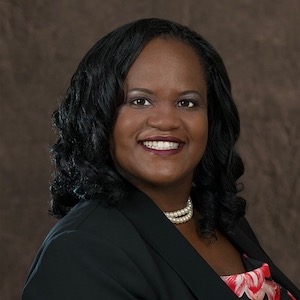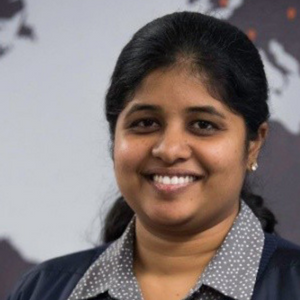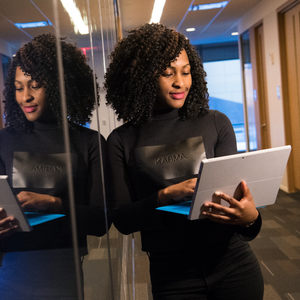Loredana Crisan: VP, Messaging Experience — Messenger & Instagram
 In her role at Meta, Loredana Crisan leads the product and engineering teams crafting messaging experiences for the billion-strong community on Messenger and Instagram. From formally studying musical composition in her birth country of Romania to influencing how we connect daily at one of tech’s giants, Crisan shares with theglasshammer on why she focuses on creating over achieving, how her background in music infuses her creative approach to designing experiences and how building teams of complementary experts is like creating a symphony orchestra.
In her role at Meta, Loredana Crisan leads the product and engineering teams crafting messaging experiences for the billion-strong community on Messenger and Instagram. From formally studying musical composition in her birth country of Romania to influencing how we connect daily at one of tech’s giants, Crisan shares with theglasshammer on why she focuses on creating over achieving, how her background in music infuses her creative approach to designing experiences and how building teams of complementary experts is like creating a symphony orchestra.
Q. You’ve gone from studying musical composition in Romania, to product and graphic design in tech, to heading up the entire product experience on Messenger. What thread have you followed to be where you are?
My formal education is in classical music, and I didn’t study STEM or design in school. It would have been easy for people to brush me off and assume I wasn’t qualified for a career in tech. However, my educational background in music composition and the years spent practicing an instrument has helped shape my focus on long term outcomes and helped me develop my own leadership and problem-solving skills.
My success was not a straight path, especially not being an American and not trained as a designer. But, I never thought of these as hurdles, instead I remained open to opportunities.
I did not make an explicit decision to work in tech — I joined a start-up as a sound engineer. We were working on a product, and I really wanted to make that product better. To do that, I had to switch mediums from sound to visuals. Using my creativity from music, I went from different mediums, sound to UI. Moving to Product, I went from creating the experience to executing the experience, and leaning into the vision for how people use the experience.
Q. How do you see the tech industry as enhanced by non-traditional candidates like yourself?
As a product team leader, when recruiting, I seek out qualities like resourcefulness, creativity, and other traits that don’t necessarily jump off the page when reading a resume or browsing a LinkedIn profile.
I’d encourage all product leaders to be more open-minded throughout the recruitment process. Just because a candidate’s background differs from the conventional, doesn’t mean they aren’t qualified.
Q. We understand you are passionate about “relinquishing gender stereotypes” in the tech industry. Tell us more about your experience as a woman in tech.
I honestly wish the world was a lot less gendered. Biases exist of course, but looking at my tween kids, they’re starting to reject these constructs and it’s so much freer for them.
I’ve worked in male-dominated industries quite a bit. I have a deep belief that regardless of gender, if you overcome imposter feelings, you learn, develop and grow. I don’t stop to think about what would have happened if I wasn’t a woman.
I’ve learned to embrace my inner self and inner weirdness and break away from stereotypes – even gender. You can see this expressed in artwork we design on Messenger. We’re hoping to help people express how they really feel whether that’s through an AR effect, camera sticker, or 360-degree immersive background.
Q. You emphasize “creating vs. achieving” as a secret to your success. Can you expand on what this means to you?
In a music setting, you don’t just pick what you want to play and skip ahead to the performance. It’s all about what goes into the preparation and development of that performance.
This is true for product teams too. Focusing on the outcome exclusively robs your team of the joy of paying attention to the details. To set your team up for success, allow them to focus on the flow of making something exciting every step of the way.
For example, earlier this year when we unveiled Soundmojis, our team was focused on creating fun, delightful sounds that could be used across a broad range of contexts. In one instance, our sound engineers even travelled to an organic California farm to record actual goats! By allowing my team to be creative and enjoy the process of developing the Soundmojis, we were ultimately able to create experiences that are also fun for our users.
Q. You have paralleled building a team of experts to auditioning a band and compared working with teams to creating a symphony. Can you tell us more?
The beauty of an orchestra performance lies in hearing very different instruments come together to create one harmonious and complex piece of music. Whether you’re performing in front of an audience, developing hardware, or creating a new user interface (UI), putting together an effective team means thinking in a holistic manner.
If you were to hire only cellists for an orchestra, the resulting music would be limited to their specialist capabilities. It would miss the rhythmic beat of the percussion section, the timbre of the brass section, and so much more. Similarly, if you have a team made up of designers, your product may have a beautiful UI but clunky functionality supporting it. It’s only when you have the right mix of skills, along with an open work environment, that all the necessary elements can come together.
Also keep in mind that generalists can give your team more flexibility whereas specialists bring a high level of expertise in their field. When working on a project, having those generalists involved can help ensure every part of a product is getting the attention it needs throughout development. Any good team needs a mix of specialists and generalists to bring a variety of skills and perspectives to building products.
When we’re working, I like to tell my team to “mind the gap” – meaning the gap between what they do, whether that’s engineering, design, or business strategy, and what their teammates do. This is where the real opportunity lies for teams to be creative, push boundaries and deliver innovations to users.
Q. What particularly fascinates you and propels you each day?
Life happens on Messenger. Anything that can happen with friends and family can happen together on the app. It’s interesting to work on a product that has so much humanity baked in. When I decided not to be a musician anymore, I wanted to go back to school to learn psychology. Of course, much of psychology has to do with relationships. I was interested in how people relate to one another. Messenger is a place where people grow old and form new relationships.
Q. What does it mean to “push the boundaries” in your work? What are some of the key trends that grasp your attention, and where do you think we are going next?
To push the boundaries in modern communication means to continue to innovate how we can bring people together and build close connections via Messenger. Some key messaging trends that grasp my attention would be the evolution of multimedia, audio, and video.
Over 1.4 billion images are sent every day on Messenger–meaning nearly every 1 in 20 messages sent on Messenger is a photo. For the true math whizzes, that’s about 12,000 photos per second! While photos will always play an important role in visual communication and building close connections, I suspect that audio will begin to override image messaging as the trend continues to rise. Messenger hit an all-time high with people sending more than 400 million voice notes daily.
Additionally, video has become an extension of messaging, especially as keeping in touch took on a new level of importance as a global pandemic sent us all indoors. We had to adapt to a new way of communicating and with the pandemic in full swing, we saw the number of people in group video and audio calls nearly double earlier this year compared to last year, with time in calls growing 150%. To create a space where you could hang out and connect with your closest friends, Messenger also introduced Rooms and offered a virtual living room space to enjoy new memories when they couldn’t be in-person with Watch Together. It’s exciting to see all of the ways people are using the platform together.



